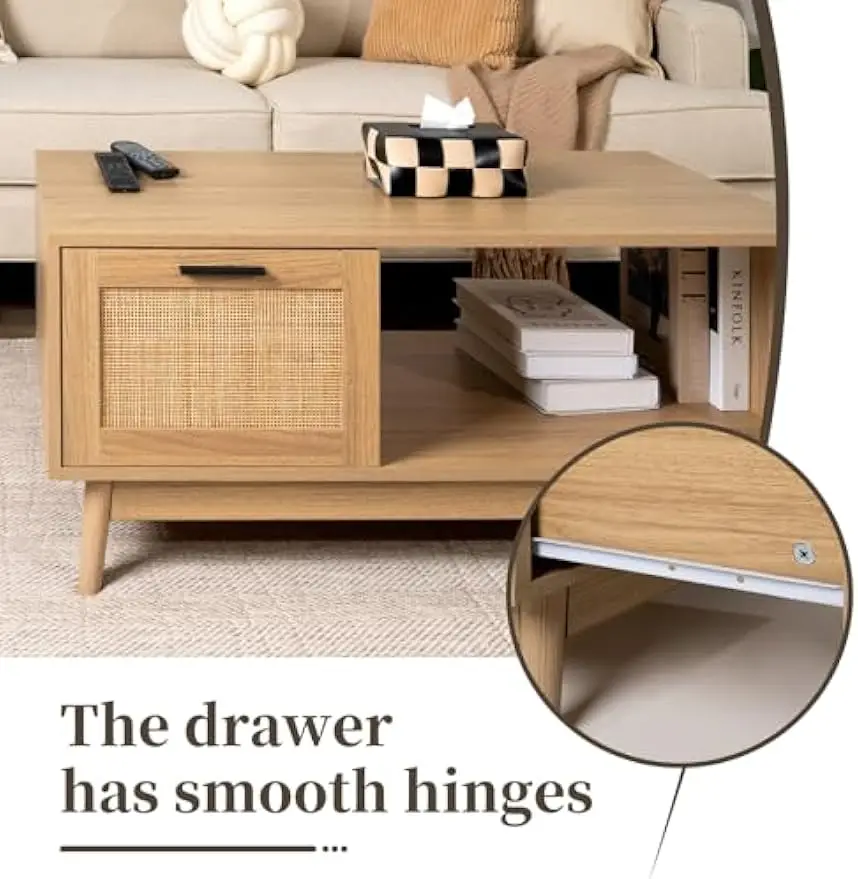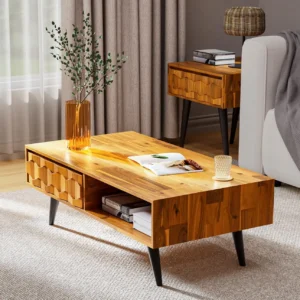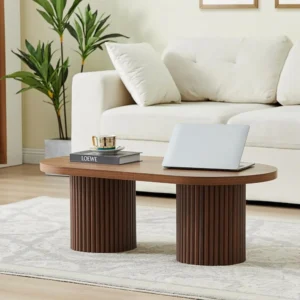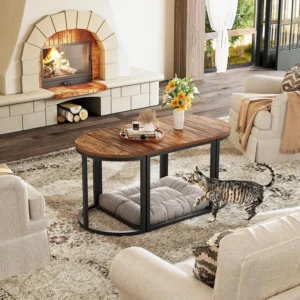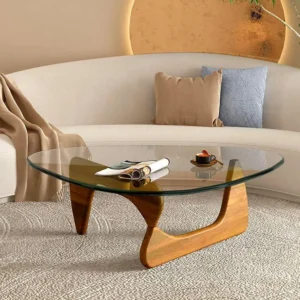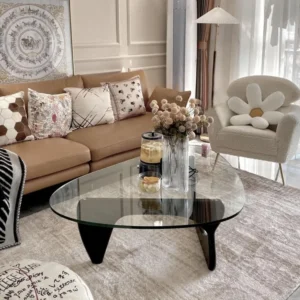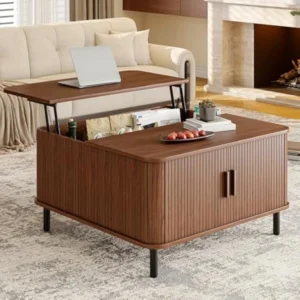Introduction to Vintage Table Design
The world of vintage tables is filled with character, history, and unique design elements that tell stories of past eras. But what exactly makes a table “vintage”? Generally speaking, vintage pieces are between 20 and 100 years old, distinguishing them from antiques which are over a century in age. Understanding the design characteristics of these treasured pieces is essential not just for collectors, but for anyone who appreciates the craftsmanship and aesthetic value of furniture with history.
Whether you’re browsing flea markets, estate sales, or specialized dealers, having the knowledge to identify authentic vintage tables empowers you to make informed decisions about value, quality, and authenticity. Throughout this guide, we’ll explore the materials, construction techniques, distinctive styles, and identifying features that define vintage tables from various eras, including Victorian, Art Deco, and Mid-Century Modern periods.
The ability to recognize authentic design elements isn’t just about avoiding reproductions—it’s about developing an appreciation for the craftsmanship and innovation that characterized different design movements. Many intelligent black mid-century coffee tables incorporate design elements that have stood the test of time, showcasing why these pieces remain sought after decades after their creation.
At Hearth Forms, our curation process places significant emphasis on authentic design elements—each piece in our mid-century modern vintage coffee tables collection has been carefully selected to represent true characteristics of its era.
The Evolution of Vintage Table Design Through Time
The story of vintage table design reflects broader cultural shifts and technological advancements throughout the 20th century. The 1920s to 1970s saw dramatic transformations in furniture design, influenced by everything from world wars to cultural revolutions.
In the aftermath of World War I, Art Deco emerged with its luxurious materials and geometric patterns, representing optimism and glamour. The economic hardships of the 1930s Depression era led to simpler, more functional designs that maximized limited resources while maintaining style.
The post-World War II period brought perhaps the most significant revolution in table design. The optimism of peacetime, combined with new technologies and materials, gave birth to Mid-Century Modern style. This era saw furniture transform from purely functional objects to artistic statements that could be mass-produced for the growing middle class. Black mid-century coffee table design exemplifies how this period successfully merged functionality with sculptural beauty.
The transition from handcrafted to mass-produced furniture marked a democratic shift in design, making stylish pieces accessible to average households. Yet despite this industrialization, the most memorable vintage tables maintained their connection to quality materials and thoughtful craftsmanship.
What’s fascinating about vintage table design is its cyclical nature—elements popular in the 1950s found renewed appreciation in the 1990s and continue to influence contemporary furniture design today. This enduring appeal speaks to the timeless quality of good design principles.
Essential Materials: The Foundation of Vintage Table Identification
Materials often provide the first and most reliable clues to a table’s era and authenticity. Each design period favored certain materials that reflected both available resources and aesthetic preferences of the time.
Woods and Their Stories
Teak and Rosewood: These warm, rich-toned woods became synonymous with Mid-Century Modern design, particularly in Scandinavian pieces. Teak was prized for its natural oils and resistance to water damage, making it both beautiful and practical. Many mid-century modern teak coffee tables showcase the wood’s distinctive straight grain and golden-brown color that deepens with age.
Walnut: A staple in American Mid-Century design, walnut offers deep brown tones with occasional purple undertones and typically has a straight grain that may feature dramatic figuring.
Oak: Predominant in Arts and Crafts and Mission-style furniture, oak is recognized by its prominent grain pattern and light color. Quarter-sawn oak, with its distinctive ray fleck patterns, was especially prized.
Mahogany: Common in Victorian, Empire, and Federal-style tables, mahogany presents a reddish-brown color that deepens over time and offers exceptional carving properties for detailed ornamentation.
Metals as Design Elements
Chrome: Highly polished chrome became emblematic of both Art Deco glamour and later Mid-Century Modern streamlining, often appearing as accent elements or table bases.
Brass: Victorian and Hollywood Regency styles frequently incorporated brass hardware and accents, providing warm contrast to dark woods.
Wrought Iron: Industrial and rustic vintage tables often feature wrought iron elements, prized for their strength and ability to be formed into decorative shapes.
Other Distinctive Materials
Glass: From thick, beveled glass in Art Deco pieces to thin, smoky glass in Mid-Century designs, glass tabletops evolved significantly across different eras.
Marble and Stone: Often used for tabletops, particularly in side tables and accent pieces, with different types of stone favored in different periods.
Formica and Laminates: Revolutionary in the mid-20th century, these synthetic surfaces brought color, pattern, and practicality to table designs, especially in kitchen and dining settings.
How to Identify Wood Types in Vintage Tables
Identifying the wood used in a vintage table provides crucial information about its age, origin, and authenticity. Start by examining the grain pattern—walnut typically has a straight grain with dark streaks, while teak features a more uniform, straight grain with natural oil feel.
Weight offers another clue, as hardwoods like oak and maple are significantly heavier than softwoods. When examining a piece, look for unexposed areas (like the underside or inside of drawers) which often show the wood’s true color before oxidation and sun exposure changed the more visible surfaces.
Understanding the difference between solid wood and veneer construction is also essential. Many quality vintage tables used veneer techniques—thin layers of premium wood applied over more stable bases—which doesn’t necessarily indicate lower quality. In fact, some of the finest unveiling mid-century teak table design features masterfully applied veneers in geometric patterns.
To test wood without damage, examine how it reflects light (natural woods have varied reflection compared to synthetics), and in inconspicuous spots, see how it responds to slight dampness—synthetics won’t absorb moisture like real wood.
Construction Techniques: Revealing a Table’s Age and Authenticity
The way a table is put together often reveals more about its age and authenticity than any other feature. Construction methods evolved significantly through different eras, reflecting both available technology and design philosophies.
Joinery Techniques Through the Decades
Dovetail Joints: These interlocking, trapezoidal-shaped joints appear frequently in drawer construction. Hand-cut dovetails (pre-1890s) have slightly irregular spacing and sizing, while machine-cut dovetails (post-1890s) show perfect uniformity.
Mortise and Tenon: This ancient joinery method, where a projecting tenon fits into a mortise hole, remains one of the strongest ways to join wood. Its presence suggests quality construction across many periods.
Finger Joints and Dowels: These joining methods became more common in mid-century furniture as production techniques evolved. Evenly spaced dowels often indicate machine-assisted construction from the 1940s onward.
Screws and Hardware: The type of screws used can date a piece remarkably accurately. Hand-forged screws with irregular slots appear in very early pieces, while Phillips head screws weren’t common until after 1930.
Underside Assessment
The bottom of a table often holds the clearest historical record of its construction. Look for corner blocks in older pieces, which reinforced the frame. The type of wood used for structural elements like aprons and supports—often different from the showcase wood on visible surfaces—can also provide clues about manufacturing region and era.
Solid wood coffee tables from different periods show distinctive construction approaches. Early 20th-century pieces tend to have heavier structural elements, while mid-century designs often feature lighter construction that creates visual lightness without sacrificing stability.
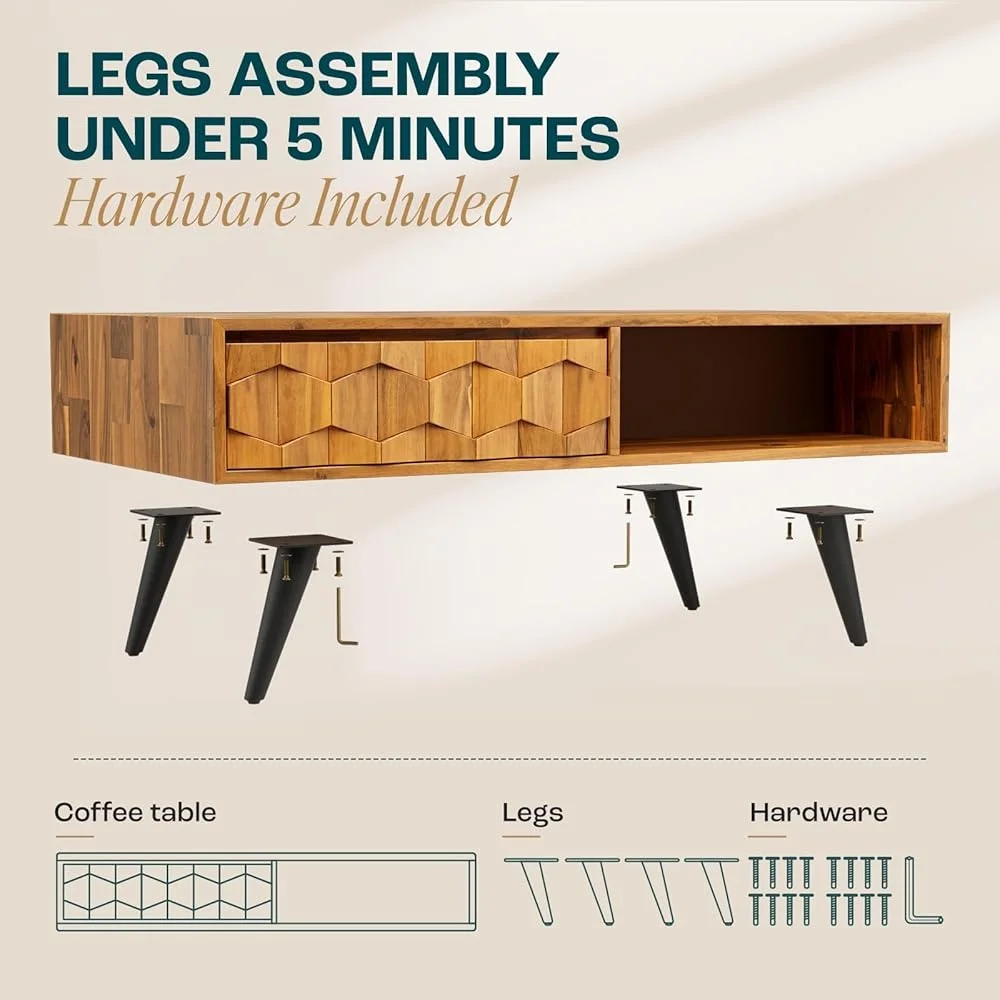
Signature Silhouettes: Table Forms That Define an Era
A table’s overall form—its shape, proportions, and profile—often immediately identifies its design period. These silhouettes evolved not just as style preferences changed but as the function of tables in home life transformed.
Coffee tables, for instance, only became common household items in the 1920s, coinciding with the growing centrality of living rooms in family life. Their evolution from formal, high occasional tables to lower, more casual surfaces tracks changing social customs around entertaining and relaxation.
Classic Vintage Table Types:
Dining Tables: Victorian dining tables often featured heavy pedestals and extendable leaves for formal dining, while mid-century designs introduced more casual round and oval shapes with single pedestal bases.
Coffee Tables: These evolved from rectangular, fairly high surfaces to more organic shapes and lower profiles through the mid-20th century. Styling black mid-century coffee table approaches often emphasize their horizontal planes and sculptural qualities.
Side and Accent Tables: These smaller pieces often showcase the most experimental designs of their era, from Victorian plant stands with turned details to biomorphic Mid-Century Modern forms.
Console Tables: Originally designed for hallways and entryways, these narrow tables evolved from ornate display pieces to sleeker functional surfaces as the century progressed.
The proportional relationship between height, width, and depth shifted dramatically through different design movements. Victorian and earlier 20th-century pieces typically featured heavier proportions, while Mid-Century Modern design introduced lower, longer lines that created a sense of horizontal flow in interiors.
The Language of Legs: A Visual Guide to Table Support Styles
Perhaps no single element defines a table’s period more clearly than its legs. These structural components became key style signatures across different design movements.
Key Leg Styles and Their Eras:
Tapered Legs: Slender legs that narrow toward the floor became iconic in Mid-Century Modern design, often angled outward for both stability and visual dynamism.
Hairpin Legs: These minimalist metal legs, typically made of steel rod bent into a double-pronged shape, epitomize mid-century industrial-influenced design.
Turned Legs: Common in Victorian, Colonial Revival, and traditional styles, these legs feature rounded profiles created on a lathe, often with decorative bulges and narrowings.
Cabriole Legs: These S-curved legs with an outward curve at the top and inward curve at the bottom originated in 18th-century designs but appear in revival styles and Hollywood Regency pieces.
Splayed Legs: A hallmark of Danish modern coffee table elements, these straight legs angle outward from the table at approximately 15-30 degrees, creating a sense of dynamic tension.
Pedestal and Tulip Bases: Popularized by designers like Eero Saarinen, these central support systems create a sculptural look while maximizing legroom.
The way legs attach to the tabletop also evolved—from visible, ornate connections in earlier periods to nearly invisible attachments in streamlined mid-century pieces that create a floating effect.
Iconic Design Movements and Their Table Characteristics
Art Deco (1920s-1930s)
Art Deco tables capture the glamour and optimism of the Roaring Twenties through:
– Bold geometric forms with strong vertical lines and stepped profiles
– Luxurious materials including exotic wood veneers (particularly bird’s eye maple and zebra wood), mirrored surfaces, and lacquer
– High contrast between dark and light elements
– Decorative inlays creating geometric patterns
– Chrome and glass combinations that reflected the era’s fascination with technology and speed
Mid-Century Modern (1940s-1970s)
This influential period brought revolutionary approaches to table design:
– Clean, organic lines inspired by nature but refined for mass production
– Functional minimalism that eliminated unnecessary ornamentation
– Integration of new manufacturing techniques allowing for sculptural forms
– Mix of natural materials with new technologies (wood with molded plastic, fiberglass)
– Scandinavian influence emphasizing warm woods and humanistic forms versus American Modern’s more dramatic, sometimes space-age aesthetic
Industrial Style
With origins in factory and workshop furniture later adopted for home use:
– Utilitarian designs prioritizing function over decoration
– Raw materials including unfinished metals, rough-hewn wood, and exposed hardware
– Mechanical elements like crank mechanisms, wheels, and adjustable heights
– Repurposed components giving new life to vintage industrial equipment
Other notable vintage styles include Arts and Crafts with its emphasis on visible joinery and natural finishes, Shaker design featuring restrained elegance and perfect proportions, and Art Nouveau’s flowing, nature-inspired organic lines.

Mid-Century Modern Tables: The Enduring Appeal of Functional Art
Mid-Century Modern tables represent a perfect marriage of artistry and utility. These pieces emerged during a period of post-war optimism and technological innovation, resulting in designs that feel both timeless and distinctly of their era.
The defining principle behind these tables was the idea that beautiful form should always serve practical function. This philosophy produced pieces that eliminated unnecessary ornamentation while elevating structural elements into visual features. The iconic splayed legs of a dining table weren’t just supportive—they became a sculptural statement expressing dynamic energy.
Natural materials take center stage in these designs, with warm woods like walnut creating a counterpoint to the period’s new synthetic materials. Walnut coffee tables showcase this wood’s rich color and grain patterns, typically finished to enhance rather than disguise its natural characteristics.
What makes these designs continue to resonate in contemporary interiors is their perfect balance—they’re distinctive enough to serve as focal points yet versatile enough to complement various styles. Their clean lines and organic shapes create a visual language that feels fresh even decades after their creation.
Decorative Details: The Finishing Touches That Define Vintage Tables
While overall form may make the boldest statement, it’s often the smaller decorative details that provide the most accurate clues to a table’s age and style.
Surface Treatments
Inlays and Veneers: From elaborate marquetry patterns in Art Deco pieces to book-matched wood veneers in Mid-Century designs, surface decoration techniques evolved dramatically. Earlier periods favored more ornate inlay patterns, while later designs used veneers primarily to showcase beautiful grain patterns.
Painted Finishes: These range from hand-painted decorative motifs on Victorian tables to bold solid colors or geometric patterns on mid-century pieces.
Edge Treatments: The profile of a table’s edge evolved from ornate, multi-stepped edges in earlier pieces to the beveled or “knife” edges of Art Deco, and finally to the clean bullnose or waterfall edges common in Mid-Century Modern designs.
Hardware Elements
Drawer Pulls and Knobs: These small elements speak volumes about a table’s era—from ornate brass Victorian pulls to sleek, minimalist wooden pulls in Danish Modern pieces.
Metal Accents: The type of metal and its finish can place a piece in time—dark oxidized brass for Victorian, chrome for Art Deco, and mix of warm and cold metals in Mid-Century designs.
Casters and Feet: Early vintage tables often featured visible casters made of wood or brass, while later designs incorporated more discreet feet or eliminated them entirely for cleaner lines.
The evolution from elaborate to minimal decoration across the 20th century reflects changing tastes but also technological developments. As manufacturing techniques improved, designers could achieve visual impact through form rather than added decoration.
Nesting coffee tables demonstrate this evolution particularly well—early 20th century examples often featured decorative painted elements, while mid-century versions relied on the graceful relationship between simple forms for their visual appeal.
Authentication Techniques: Distinguishing Genuine Vintage from Reproductions
With vintage style’s enduring popularity, distinguishing authentic pieces from well-made reproductions requires careful examination and knowledge.
Signs of Age and Use
Authentic vintage tables show specific wear patterns that can’t be easily faked:
– Genuine patina develops unevenly based on use—more wear on edges and surfaces that saw frequent contact
– Natural oxidation causes color changes, especially where wood was exposed to sunlight
– Uneven fading on upholstered elements or painted surfaces
– Artificial distressing in reproductions often appears too uniform or appears in unlikely places
Construction Clues
Examine hardware and hidden elements:
– Screws in genuine vintage pieces show appropriate aging for their era
– Original staples in upholstered pieces will show oxidation
– Secondary woods used in less visible areas (drawer sides, support elements) often differ from modern practices
– Machine marks reflect the technology of the era—look for inconsistencies in reproductions
Maker’s Marks and Labels
Many quality vintage tables bear identification:
– Paper labels inside drawers or on table undersides
– Branded or stamped maker’s marks (often on unseen surfaces)
– Metal plaques or medallions identifying the manufacturer
– Impressed or stamped dates or model numbers
When examining potential vintage pieces, develop the habit of turning them upside down—the underside often tells the most honest story about age and construction. Understanding the features black mid-century coffee tables typically display helps distinguish genuine articles from contemporary pieces made in vintage style.

Caring for Your Vintage Table: Preservation Techniques
Proper care ensures your vintage table remains beautiful and functional for years to come, preserving both its aesthetic appeal and its value.
Material-Specific Care Guidelines
Wood: Clean with minimal moisture using a soft cloth slightly dampened with a gentle wood cleaner. Apply paste wax 1-2 times yearly for protection, avoiding silicone-based products that build up over time.
Metal: Clean chrome and stainless steel with appropriate metal cleaners; treat brass with specific brass products that clean without removing all patina.
Glass: Use ammonia-free glass cleaner applied to your cloth rather than spraying directly on surfaces, particularly for painted or gilded glass.
Laminates: Clean with mild soap and water, avoiding abrasive cleaners that can scratch the surface.
Protecting Vintage Surfaces
- Always use coasters for hot and cold drinks
- Apply felt pads to items placed on tabletops
- Position tables away from direct sunlight to prevent uneven fading
- Maintain consistent humidity levels to prevent wood cracking or warping
- Use tablecloths or placemats for dining tables during meals
For minor scratches in wood surfaces, products like touch-up markers or wax sticks in matching colors can minimize visibility. However, significant restoration should be approached cautiously—in many cases, maintaining an authentic patina preserves both character and value better than attempting to make a piece look new.
The mid-century modern coffee tables in your collection deserve care that respects their history while ensuring they remain functional in your daily life.
Mid-Century Modern Solid Wood Coffee Tables, Mid-Century Modern Teak Coffee Tables
$879.95 Select options This product has multiple variants. The options may be chosen on the product pageMid-Century Modern Danish Coffee Tables, Mid-Century Modern Oval Coffee Tables, Mid-Century Modern Solid Wood Coffee Tables
$390.05 Select options This product has multiple variants. The options may be chosen on the product pageMid-Century Modern Coffee & End Table Sets, Mid-Century Modern Coffee Table Sets, Mid-Century Modern Oval Coffee Tables
Price range: $257.48 through $331.04 Select options This product has multiple variants. The options may be chosen on the product pageMid-Century Modern Glass Top Coffee Tables, Mid-Century Modern Glass Top Side & End Tables
$460.58 Select options This product has multiple variants. The options may be chosen on the product pageMid-Century Modern Glass Top Coffee Tables, Mid-Century Modern Vintage Coffee Tables, Mid-Century Modern Vintage Side & End Tables
$725.36 Select options This product has multiple variants. The options may be chosen on the product pageMid-Century Modern Lift Top Coffee Tables, Mid-Century Modern Square Coffee Tables
$454.73 Select options This product has multiple variants. The options may be chosen on the product page
Why Vintage Tables Continue to Captivate Modern Spaces
The enduring appeal of vintage tables extends far beyond nostalgia. These pieces represent sustainable choices in an age of disposable furniture—built with materials and techniques designed to last generations rather than years. By choosing vintage, you’re not just decorating; you’re participating in a form of preservation.
Quality materials tell part of the story—old-growth woods with tight grain patterns, thoughtfully selected for beauty and durability, create pieces with character impossible to replicate in mass production. The craftsmanship evident in precise joinery and thoughtful details speaks to an era when furniture was built to be handed down rather than discarded.
Perhaps most importantly, vintage tables bring authentic character to contemporary spaces. Unlike matching furniture sets, these individual pieces carry history and design integrity that create natural focal points. Their presence adds layers of visual interest and conversation-starting elements to modern interiors, whether complementing contemporary furnishings or anchoring a collection of period pieces.
By understanding the design characteristics that define different vintage styles, you develop not just practical identification skills but a deeper appreciation for the creativity, craftsmanship, and cultural context embedded in these enduring pieces of functional art.

